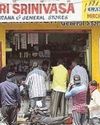The SHAKTI scheme, meant to improve coal linkages to power plants, has not revealed bidding details

The SHAKTI (Scheme for Harnessing and Allocating Koyala Transparently in India) policy was approved in May 2017 with the intent of better allocation of coal to present and future power plants. It aimed to phase out the present Letter of Assurance and Fuel Supply Agreement (FSA)based regime, and instead introduce a more transparent and competitive coal allocation policy. The policy also offered a potential solution to the lack of coal linkages to 17 power plants with capacity of about 15,000 MW, which were part of the 34 power plants (of about 40,000 MW) declared as stressed.
The policy was amended in March 2019 specifically to aid stressed projects based on the recommendations of a High Level Empowered Committee. But two years since the policy’s launch, how has it played out on the ground?
Status quo
Section B(i) of the policy allows granting of coal linkages to Central and State PSUs as well as JVs formed amongst them. Linkages have been granted to 18 projects (22,160 MW) until June 2019 under this section.
Under Section B(ii) of the SHAKTI policy, coal linkages are auctioned to independent power producers (IPPs) who do not have coal linkages but have power purchase agreements (PPAs), based on discounts quoted on the PPA tariff. Over the last two years, there have been two rounds of bidding for coal linkages under this section. For the first round, held in September 2017, 31 applications from IPPs were received, of which 14 were deemed eligible and 10 participated in the auction.
This resulted in allocation of about 27 million tonnes per annum (MTPA) of coal to a capacity of 11,549 MW, at tariff discounts ranging from 1-4p per unit. No information is publicly available regarding the second round of bidding, which took place in May 2019.
この記事は The Hindu Business Line の August 29, 2019 版に掲載されています。
7 日間の Magzter GOLD 無料トライアルを開始して、何千もの厳選されたプレミアム ストーリー、9,000 以上の雑誌や新聞にアクセスしてください。
すでに購読者です ? サインイン
この記事は The Hindu Business Line の August 29, 2019 版に掲載されています。
7 日間の Magzter GOLD 無料トライアルを開始して、何千もの厳選されたプレミアム ストーリー、9,000 以上の雑誌や新聞にアクセスしてください。
すでに購読者です? サインイン

Covid Presents An Opportunity For India
India must attract investors exiting China post-Covid. Streamlining of project clearances and relaxation in FRBM norms will help

Did Alternative Assets Shield You From Covid-19 Volatility?
The assets closely linked to stock and debt markets could not stave off the losses

How To Put Aircraft To Bed
Preserving grounded planes, to get them up and flying at short notice, is a challenging task. Ashwini Phadnis captures the process

There Can Be No Going Back On WFH
Covid-19 has fast-forwarded the shift to ‘work from home’. However, some face-to-face connect will always be needed

UN, WHO Urged To Ensure ‘Benefit Sharing' Of Covid-Related Data
Biopharma firms should reach vaccines, medicines to poor nations at an affordable price, say civil society bodies

With No Clear Signal From Rlys, States Explore Ways To Bring Back Migrants
Quarantine centres, cross-country buses being arranged even as migrants hop on to boats, trucks and ambulances

Centre Allows All Neighbourhood Shops To Open But With Riders
Final call will be taken by local authorities; shopping complexes that draw fewer ‘outsiders’ are permitted to operate

Covid Impact Relatively Muted In India
Compared to Italy and the US, India’s rate of infection spread has been slow. This can be attributed to the strict measures in place

How Global Trade Will Fare Post-Covid
China isn’t likely to lose its pre-eminent position soon. India, for one, will need to make manufacturing globally competitive

How To Curb Harassment In The Virtual Office
Training and sensitisation are essential. Institute a strict dress code and chat etiquette to ensure professionalism during video calls